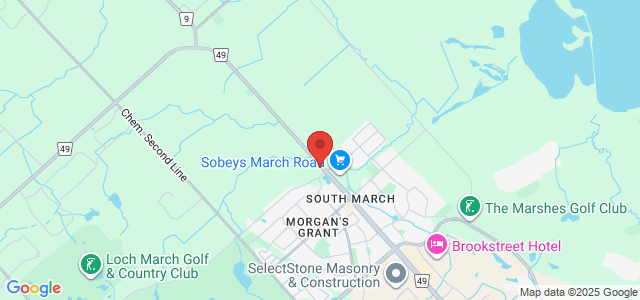Skin resurfacing is directed towards the treatment of wrinkles, hyperpigmentation, acne scars, large pore size and pre-cancerous lesions. You will find below information on the Carbon Dioxide Laser and the Pixel Erbium Yag Laser.
You can learn more about Skin Resurfacing below. If you would like to speak with Dr. James Lacey about Skin Resurfacing, you can request a consultation by clicking here.
Carbon Dioxide Laser
Whereas pure skin tightening procedures occur at the deep dermal level with non ablative technology (i.e.:Thermage), the skin resurfacing procedures are more often (although not exclusively) ablative in nature. This of course excludes the reference to microdermabrasion and chemical peels.
The ablative technology which is most commonly utilized by. includes the use of CO2 lasers and Pixel technology which is a fractional Erbium Yag device. The difference in the fractionation technology is that the device treats less of the surface area and thus is associated with less down time.
 The CO2 laser is the Gold Standard in skin resurfacing. The laser targets water in the skin layers which vaporizes layers of tissue thus removing old skin and then replacing it with new cells. It can be used on the entire face or specific localized facial areas. The laser treatment results in a tightening effect on the skin which can be beneficial when used on the lower eyelid and perioral region.
The CO2 laser is the Gold Standard in skin resurfacing. The laser targets water in the skin layers which vaporizes layers of tissue thus removing old skin and then replacing it with new cells. It can be used on the entire face or specific localized facial areas. The laser treatment results in a tightening effect on the skin which can be beneficial when used on the lower eyelid and perioral region.
Skin color is not necessarily a barrier to treatment though skin thickness and texture may determine whether you are a good candidate for laser treatment. If you are having other facial cosmetic surgery such as a facelift or eyelid surgery, you may very well be able to have laser skin resurfacing at the same time, which improves your overall results.
About the Procedure
Dr. James Lacey will assess your skin type and the extent to which you have sun damage, uneven pigmentation and skin imperfections since fine lines and deeper wrinkling or depressions will require different approaches to treatment.
The risks of laser resurfacing are few but include infection or abnormal healing and prolonged redness. If you have had allergic reactions or herpes, skin resurfacing can cause a recurrence of these conditions. The occasional patient may form raised or thickened scars following the procedure.
Following laser resurfacing, you must avoid sun exposure until the redness of your skin has disappeared. In fact, it is better to avoid the harmful effects of the sun permanently with sun block and head coverings.
A scab may or may not form over the treated skin but you will be advised about this and the technique required in cleansing your skin. Camouflage makeup can be used within two weeks of resurfacing and you should be able to return to work within a week to ten days.
Dr. James Lacey will review the procedure, down time and inherent risks in this procedure prior to proceeding. A strict and post operative skin care regime utilizing specific Skin Care products assists in achieving the best overall results. Prices will vary depending upon the area treated.
Dr. James Lacey has also added a NEW FRACTIONAL CO2 device to his treatment options which will result in less down time.
FRACTIONAL CARBON DIOXIDE
Dr. James Lacey has obtained the first fractional CO2 laser head which allows for the skin resurfacing and tightening which results in less down time than the original CO2 device. Please enquire regarding the use of this particular laser technology device.
PIXEL ERBIUM YAG LASER
A second resurfacing laser is the Pixel which is fractional in nature and delivers a 2940 nm wavelength to the skin surface. Although requiring less down time than the conventional CO2 laser, the skin surface will still react due to the ablative and thermal injury. This technology is directed towards the treatment of wrinkles, hyperpigmentation, large pore sizes, damaged skin and acne scars. The preparation of the skin in conjunction with good post treatment skin care products are the keys to a successful outcome. This device not only improves the quality and texture of the skin but also stimulates collagen regeneration which in turn results in skin tightening.
The “fractional” approach to resurfacing skin basically means that during each treatment, the laser effectively treats 20% of the surface area although it can treat larger areas with multiple passes and pulse stacking. The surrounding area is left alone, leading to a much shorter recovery time following the procedure. After passing safely through the surface of the skin, the laser is focused on specific points below the epidermis affected by wrinkles, discolorations, or acne scars. This laser activity encourages the production of new collagen, giving the skin a healthier, more vibrant appearance while filling in fine lines and wrinkles. In addition, as the treated area begins to heal, new, healthy skin will form.
Pixel resurfacing involves few risks beyond the swelling, redness, and irritation sometimes experienced as side effects. Compared to many cosmetic procedures, it can be a safe way to improve skin quality. In rare cases, infections or scarring may develop after. The redness, swelling, and minor irritation sometimes develop, producing an overall sensation similar to a mild sunburn. These effects usually last no more than two weeks and often fade away in just a few days. For more information, please visit the Pixel web site for more information.
If you would like to speak with Dr. James Lacey about Skin Resurfacing, you can request a consultation by clicking here.

